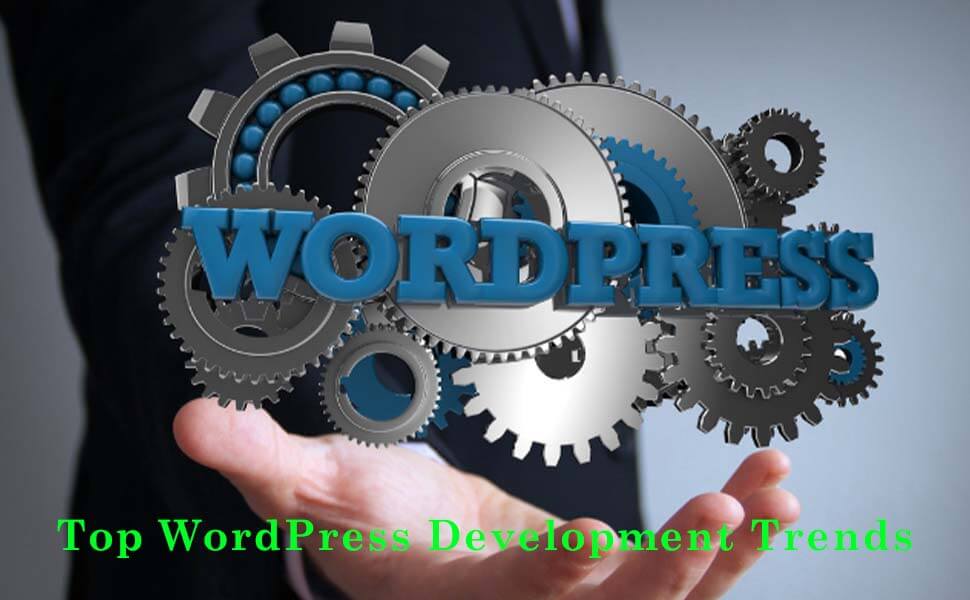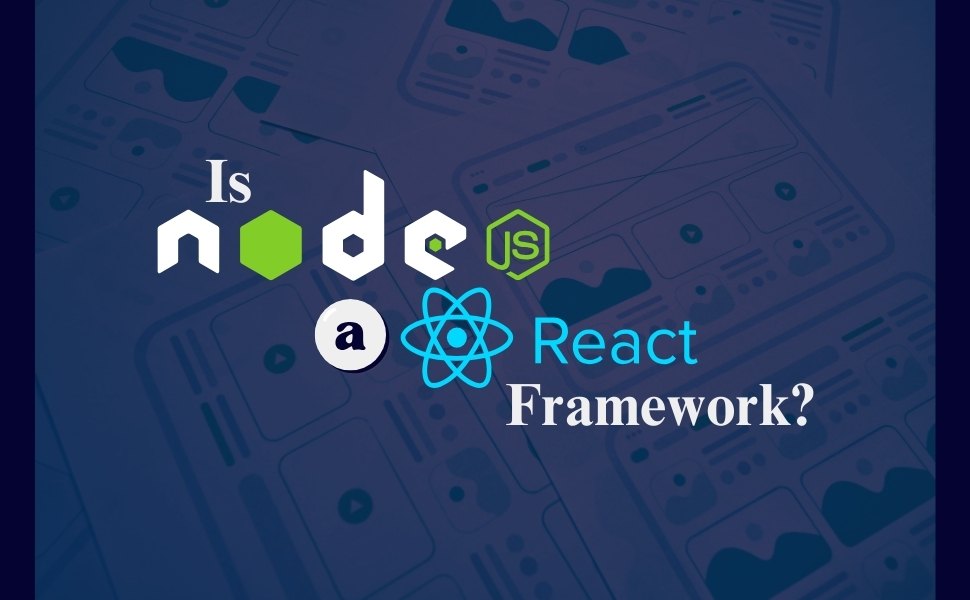Staying updated with the Top WordPress Development Trends is essential for creating modern and efficient websites. As WordPress evolves, new trends are emerging that enhance performance, security, and user experience. From headless development to AI integration, these trends shape the future of web design. Embracing them will keep your website competitive and engaging.
What are the Development Trends for WordPress?

WordPress development trends are the latest advancements, techniques, and features that shape how websites are built and managed using WordPress. These trends reflect changes in technology, user expectations, and industry standards, helping developers create more modern, efficient, and user-friendly websites.
Key trends include things like headless WordPress, which separates the front-end and back-end for greater flexibility and faster performance, and performance optimization techniques that focus on improving loading times and overall site speed. There’s also a strong emphasis on security enhancements to protect against cyber threats, and the use of AI and machine learning to provide smarter tools for content personalization and SEO.
Trends like inclusive design make sites accessible to all users, while the rise of eCommerce with WooCommerce enables businesses to sell products easily online. Other trends, such as no-code tools and minimalist design, make website creation simpler and more visually appealing. These trends ensure that WordPress remains at the forefront of web development, catering to the needs of modern users and businesses.
Related: WordPress Website Design and Development
Top WordPress Development Trends

As WordPress continues to power a significant portion of the web, staying ahead of its latest development trends is crucial for building websites that perform well and engage users. From innovative technologies like headless development to enhanced accessibility and eCommerce growth, the landscape of WordPress is constantly evolving. Embracing these trends can help developers and businesses create future-proof websites that stand out in a competitive digital world.
Trend 1: Headless WordPress Development
Headless WordPress is revolutionizing how websites are built and managed. By separating the frontend and backend, it offers developers greater control over the design and functionality of their websites. This trend not only boosts site performance but also allows for seamless integration with various platforms and technologies, making it a game-changer in web development.
- Flexibility: With headless WordPress, developers can use any frontend framework or technology, such as React or Vue, without being tied to WordPress’s default themes or templates. This flexibility allows for custom design and functionality tailored to specific needs, providing a unique user experience.
- Scalability: As websites grow, managing performance and loading speeds can become challenging. Headless WordPress enables better scalability by delivering content faster and more efficiently, even during high-traffic periods. This makes it ideal for large businesses and growing startups.
- Performance: By decoupling the frontend from the backend, headless WordPress reduces load times and improves site speed. This is achieved through optimized content delivery using modern technologies, ensuring users enjoy a fast and smooth browsing experience.
- Decoupling Frontend and Backend: Separating the content management system from the display layer allows for independent updates. Developers can make changes to the frontend without affecting the backend, resulting in more streamlined workflows and faster deployment times.
- Future-Proofing: As new technologies emerge, headless WordPress makes it easier to adapt. It provides the flexibility to integrate with future platforms and tools, ensuring your website stays relevant and competitive over time.
As we delve deeper into these WordPress trends, the focus shifts to another critical aspect: Performance Optimization. The demand for faster, more efficient websites is ever-growing, making it a priority for developers and site owners alike.
Trend 2: Emphasis on Performance and Core Web Vitals
In today’s digital age, a website’s speed and performance are crucial for user satisfaction and search engine rankings. Core Web Vitals have become key indicators of a site’s performance, driving developers to optimize every aspect of a website’s loading speed and responsiveness. Enhancing these metrics can significantly improve user experience and boost a site’s visibility on search engines.
- Faster Loading Times: Users expect websites to load within seconds. Techniques like image compression, caching, and minimizing server requests are essential to achieving this. A faster site leads to lower bounce rates and higher engagement, making speed optimization a top priority.
- Core Web Vitals: Focusing on metrics like Largest Contentful Paint (LCP), First Input Delay (FID), and Cumulative Layout Shift (CLS) helps ensure a website is fast and stable. These metrics are critical for both user experience and SEO, as they directly impact search rankings.
- Static Site Generation: By converting dynamic content into static files, static site generation reduces the load on servers and improves site speed. This method is particularly useful for content-heavy websites and blogs.
- Server-Side Rendering: This technique allows pages to load more quickly by generating HTML on the server rather than the client. It can greatly enhance performance, especially for users with slower internet connections.
The next trend emphasizes Security Features, which are crucial for protecting websites from evolving threats and ensuring safe user interactions.
Trend 3: Enhanced Security Features
Security remains a top concern for website owners, and WordPress is no exception. As cyber threats become more sophisticated, developers are adopting advanced security measures to safeguard their sites and users’ data. From AI-powered security tools to regular updates, the focus is on creating a secure environment for everyone.
- AI-Powered Security: Artificial intelligence and machine learning tools detect and prevent potential threats in real time. These tools analyze patterns and behaviors to block attacks before they cause harm.
- Two-Factor Authentication: Adding a layer of security beyond the usual password, two-factor authentication (2FA) ensures that only authorized users gain access. This method helps prevent unauthorized logins and data breaches.
- SSL Encryption: Encrypting data transmitted between the user and the website prevents it from being intercepted by malicious actors. SSL certificates have become standard practice for all websites, protecting sensitive information and enhancing user trust.
- Regular Updates: Keeping themes, plugins, and core WordPress software up to date is crucial. Regular updates patch known vulnerabilities and improve overall security.
- Security Plugins: Plugins like Wordfence and Sucuri offer comprehensive security solutions, including firewall protection, malware scanning, and login protection. They help monitor, detect, and mitigate security threats effectively.
Looking ahead, the integration of AI and Machine Learning is another exciting trend that is transforming WordPress development by automating tasks and enhancing user experiences.
Trend 4: AI and Machine Learning Integration
Artificial intelligence (AI) and machine learning (ML) are reshaping WordPress development by providing smarter tools and enhancing automation. From personalized content recommendations to SEO optimization, these technologies are being integrated into WordPress to create more dynamic and engaging websites.
- Personalized Content: AI algorithms analyze user behavior to deliver tailored content that matches their preferences. This leads to higher engagement and better user satisfaction.
- SEO Optimization: AI-driven SEO tools provide suggestions for optimizing content, keywords, and meta descriptions, helping websites rank higher in search results.
- Automated Customer Support: Chatbots powered by AI offer real-time assistance, improving customer service and reducing response times.
- Content Creation and Curation: AI tools can help create, edit, and organize content more efficiently, saving time and resources for developers and content managers.
Next, we will explore the trend of Accessibility and Inclusive Design, which ensures that websites are usable for all individuals, including those with disabilities. This trend focuses on creating a more inclusive online environment.
Trend 5: Accessibility and Inclusive Design
Creating an accessible website is no longer just an option—it’s a necessity. As the digital landscape grows, ensuring that websites are usable for everyone, including people with disabilities, has become a key priority. WordPress developers are increasingly focusing on inclusive design to offer a seamless experience for all users, regardless of their abilities or devices.
- Adherence to WCAG 2.1: Compliance with the Web Content Accessibility Guidelines (WCAG) 2.1 is essential for making websites accessible to those with disabilities. This includes features like keyboard navigation, alt text for images, and screen reader compatibility, which help ensure that all users can engage with content.
- Accessibility Plugins: Plugins like WP Accessibility and Accessible help developers add necessary features to improve website accessibility. They offer solutions such as text resizing, contrast adjustment, and screen reader support.
- Readable Fonts and Colors: Choosing fonts that are easy to read and using high-contrast color schemes ensure that content is accessible to users with visual impairments. It also improves readability for everyone, creating a better overall experience.
- Voice Search Optimization: As voice search becomes more popular, optimizing websites for voice commands ensures they remain accessible to a broader audience, including those with mobility impairments or vision loss.
With accessibility at the forefront, the rise of eCommerce on WordPress is another trend that is shaping the platform’s future, making it easier for businesses to sell products online.
Trend 6: Growth of eCommerce with WooCommerce
WordPress is not just for blogs; it has become a powerful platform for online stores. WooCommerce, the leading eCommerce plugin, continues to grow, helping businesses of all sizes sell their products and services. The trend focuses on enhancing WooCommerce functionalities to cater to the evolving needs of online retailers.
- Social Commerce Integration: WooCommerce is increasingly being integrated with social media platforms like Instagram and Facebook. This allows businesses to reach a wider audience and sell directly through social channels, increasing sales and engagement.
- Subscription Models: More businesses are adopting subscription-based models to generate recurring revenue. WooCommerce supports these models by providing options for subscriptions, memberships, and recurring payments.
- Mobile Optimization: As mobile shopping becomes more common, WooCommerce ensures a seamless experience by optimizing themes and plugins for mobile devices. This improves the overall shopping experience and boosts conversion rates.
- Enhanced Payment Options: Offering multiple payment gateways, WooCommerce caters to different customer preferences, allowing for a more flexible and convenient checkout process.
- Inventory Management: Advanced inventory management tools help businesses keep track of their stock, automate reordering, and manage multiple sales channels efficiently.
As eCommerce continues to flourish on WordPress, another trend is the increasing popularity of No-Code and Low-Code Development tools that simplify website creation for everyone.
Trend 7: No-Code and Low-Code Development
Building a WordPress site no longer requires extensive coding skills. No-code and low-code tools have democratized website creation, allowing anyone to build and customize websites without writing a single line of code. This trend is empowering small businesses, bloggers, and non-developers to create professional-looking websites effortlessly.
- Drag-and-Drop Builders: Tools like Elementor, Beaver Builder, and the Gutenberg block editor enable users to design complex websites with simple drag-and-drop actions. They offer pre-built elements and templates that save time and effort.
- Ready-Made Templates: A wide range of ready-made templates are available, catering to various niches and purposes. These templates can be customized to suit specific needs, reducing the time needed for website design.
- Automated Features: No-code tools provide automated features like contact forms, pop-ups, and sliders, which can be added and configured without any coding knowledge. This helps enhance website functionality with minimal effort.
- Customizable Widgets: Custom widgets allow users to add unique features to their sites, like social media feeds, testimonials, and countdown timers, without requiring any technical expertise.
As WordPress makes website creation easier for everyone, design trends are also evolving. The focus now shifts to Modern and Minimalist Design Trends that prioritize user experience and aesthetic appeal.
Trend 8: Modern and Minimalist Design Trends
Simplicity and elegance are at the heart of modern web design. Minimalist design trends are gaining popularity for their clean layouts, user-friendly interfaces, and focus on essential content. These trends help websites load faster and offer a more intuitive experience for users.
- Dark Mode: Offering a dark mode option is becoming a standard for many websites. It not only reduces eye strain for users in low-light environments but also provides a sleek, modern look that enhances the visual experience.
- Clean Layouts: Minimalist designs with plenty of white space improve readability and focus the user’s attention on key content. This style reduces clutter, making websites more appealing and easier to navigate.
- Micro-Interactions: Small animations and interactive elements, like hover effects and loading indicators, add personality to websites and keep users engaged. They provide subtle feedback that enhances the user experience.
- Neumorphism: Combining flat and 3D elements, neumorphism creates a fresh, modern aesthetic that feels both familiar and innovative. It adds depth and texture to web design, making interfaces more visually interesting.
As design trends evolve, the emphasis on Mobile-First Development becomes even more critical to cater to the growing number of mobile users.
Related: Is WordPress User Friendly?
Trend 9: Focus on Mobile-First Development
With more users accessing websites on their mobile devices, developers are prioritizing mobile-first design strategies. This trend ensures that websites are optimized for mobile devices from the outset, providing a seamless and responsive experience for all users.
- Responsive Themes: Themes are designed to automatically adjust to different screen sizes, ensuring content looks great on any device. This approach enhances user experience and keeps visitors engaged.
- AMP (Accelerated Mobile Pages): AMP technology speeds up page load times on mobile devices, reducing bounce rates and improving user satisfaction. It’s particularly useful for news sites, blogs, and other content-heavy platforms.
- Mobile-Friendly Menus: Simple, collapsible menus that are easy to navigate on small screens make browsing more intuitive for mobile users. This improves usability and encourages visitors to explore more pages.
- Thumb-Friendly Design: Designing buttons, links, and interactive elements to be easily accessible with a thumb improves the overall user experience on mobile devices. It ensures that all elements are within easy reach, enhancing navigation.
As mobile optimization becomes standard, integrating with Advanced Marketing Tools is the next step for businesses looking to drive growth and improve their online presence.
Trend 10: Integration with Advanced Marketing Tools
WordPress sites are increasingly being integrated with advanced marketing tools to enhance digital marketing efforts. These tools help businesses reach their target audience more effectively and convert visitors into customers through various strategies.
- CRM Integration: Connecting WordPress with Customer Relationship Management (CRM) systems like HubSpot or Salesforce allows businesses to manage customer data and interactions more efficiently. It helps in tracking leads and nurturing them through personalized marketing campaigns.
- Marketing Automation: Plugins like Mailchimp and ActiveCampaign offer marketing automation features, such as automated email campaigns and segmentation. This saves time and improves the effectiveness of marketing strategies.
- SEO Plugins: Tools like Yoast SEO and Rank Math provide actionable insights and suggestions for optimizing content, keywords, and meta descriptions. They help websites rank higher on search engines and attract more organic traffic.
- Analytics Tools: Integrating with tools like Google Analytics helps track user behavior, measure performance, and make data-driven decisions to improve website effectiveness.
As businesses enhance their marketing strategies, the demand for Multilingual Websites is also rising, enabling them to reach global audiences more effectively.
Trend 11: Rise of Multilingual Websites
In an increasingly globalized world, reaching a diverse audience is crucial. WordPress makes it easy to create multilingual websites, allowing businesses to cater to users who speak different languages. This trend is essential for expanding market reach and building an international presence.
- Multilingual Plugins: Plugins like WPML and Polylang enable WordPress sites to support multiple languages. They provide translation tools and support content creation in different languages, making it easier to connect with a global audience.
- Automatic Translation: AI-powered translation tools offer quick and accurate translations of content, reducing the time and effort needed to create multilingual websites. This helps businesses reach more users without sacrificing quality.
- Localized SEO: Optimizing websites for local search engines ensures they rank well in different regions and languages. This helps attract local traffic and increases the chances of conversions.
Finally, the adoption of Progressive Web Apps (PWAs) is another trend shaping WordPress development, providing users with a fast, engaging, and reliable web experience.
Trend 12: Adoption of Progressive Web Apps (PWAs)
Progressive Web Apps are transforming how users interact with websites by offering a mobile app-like experience directly through the browser. PWAs are fast, reliable, and engaging, providing the best of both web and mobile app worlds.
- App-Like Experience: PWAs use modern web technologies to deliver a seamless, app-like experience. Users can access features like push notifications and offline access without downloading an app from a store.
- Offline Access: Even without an internet connection, PWAs allow users to access certain content and functionalities. This feature is particularly valuable for news sites and eCommerce platforms.
- Push Notifications: Sending real-time updates directly to users’ devices helps keep them engaged and informed. It’s an effective tool for driving repeat visits and increasing user retention.
By understanding and leveraging these trends, WordPress developers and site owners can create websites that are not only functional and visually appealing but also future-proof and competitive in a rapidly evolving digital landscape. Learn more.
Read More: Web Application Development Services of Boomdevs
Transform Your Website with Expert Development
At BoomDevs, we specialize in creating cutting-edge WordPress websites tailored to your specific needs. Whether you’re looking to integrate the latest trends or enhance your site’s performance and security, our team of experts is here to help. Let us bring your vision to life with custom solutions that stand out in today’s digital landscape.
Unlock the Full Potential of Your Web Presence
Ready to take your website to the next level? BoomDevs offers comprehensive web and app development services designed to deliver exceptional results. From optimizing your site for the latest trends to implementing advanced features, we’re dedicated to providing quality service that drives success. Contact us today to start transforming your web presence!
Ready to Discuss Your Business
Get a Quote.
Frequently Asked Questions:
Q1: What are the latest WordPress development trends in 2024?
A1: The latest WordPress development trends in 2024 include headless WordPress for greater flexibility and speed, performance optimization to improve loading times, AI and machine learning integration for smarter tools and personalized content, a focus on inclusive and accessible design to cater to all users, and the growing use of WooCommerce to enhance eCommerce capabilities.
Q2: Why is headless WordPress becoming popular?
A2: Headless WordPress is becoming popular because it separates the front-end and back-end, giving developers more freedom to create unique, fast, and dynamic websites. It allows the use of different technologies for the front end, like React or Vue.js, making it easier to deliver content across multiple platforms and devices.
Q3: How can I improve my WordPress site’s performance?
A3: To improve your WordPress site’s performance, focus on optimizing images, using caching plugins, minimizing CSS and JavaScript files, choosing a fast and reliable hosting provider, and implementing content delivery networks (CDNs). Additionally, consider using tools like Core Web Vitals to measure and enhance your site’s loading speed and interactivity.
Q4: What tools are available for making WordPress sites more accessible?
A4: Several tools can help make WordPress sites more accessible, including accessibility plugins like WP Accessibility and Accessibe, which offer features such as screen reader support, keyboard navigation, and text resizing. Themes that comply with WCAG (Web Content Accessibility Guidelines) standards also help ensure websites are usable for people with disabilities.
Q5: How is AI influencing WordPress development?
A5: AI is influencing WordPress development by providing smarter tools for content personalization, SEO optimization, and automated customer support. For instance, AI-powered plugins can suggest keywords, optimize images, and provide real-time chat support, enhancing both user engagement and site performance. AI also aids in analyzing user behavior to improve the overall website experience.
Wrapping Up:
In summary, the top WordPress development trends are shaping the future of web design with more flexibility, speed, security, and accessibility. These trends empower developers to create websites that are modern, user-friendly, and ready for new challenges. Staying updated with these trends ensures that WordPress remains a powerful tool for building impactful websites. Embracing them can help businesses stay ahead in the digital landscape.
Read More:








